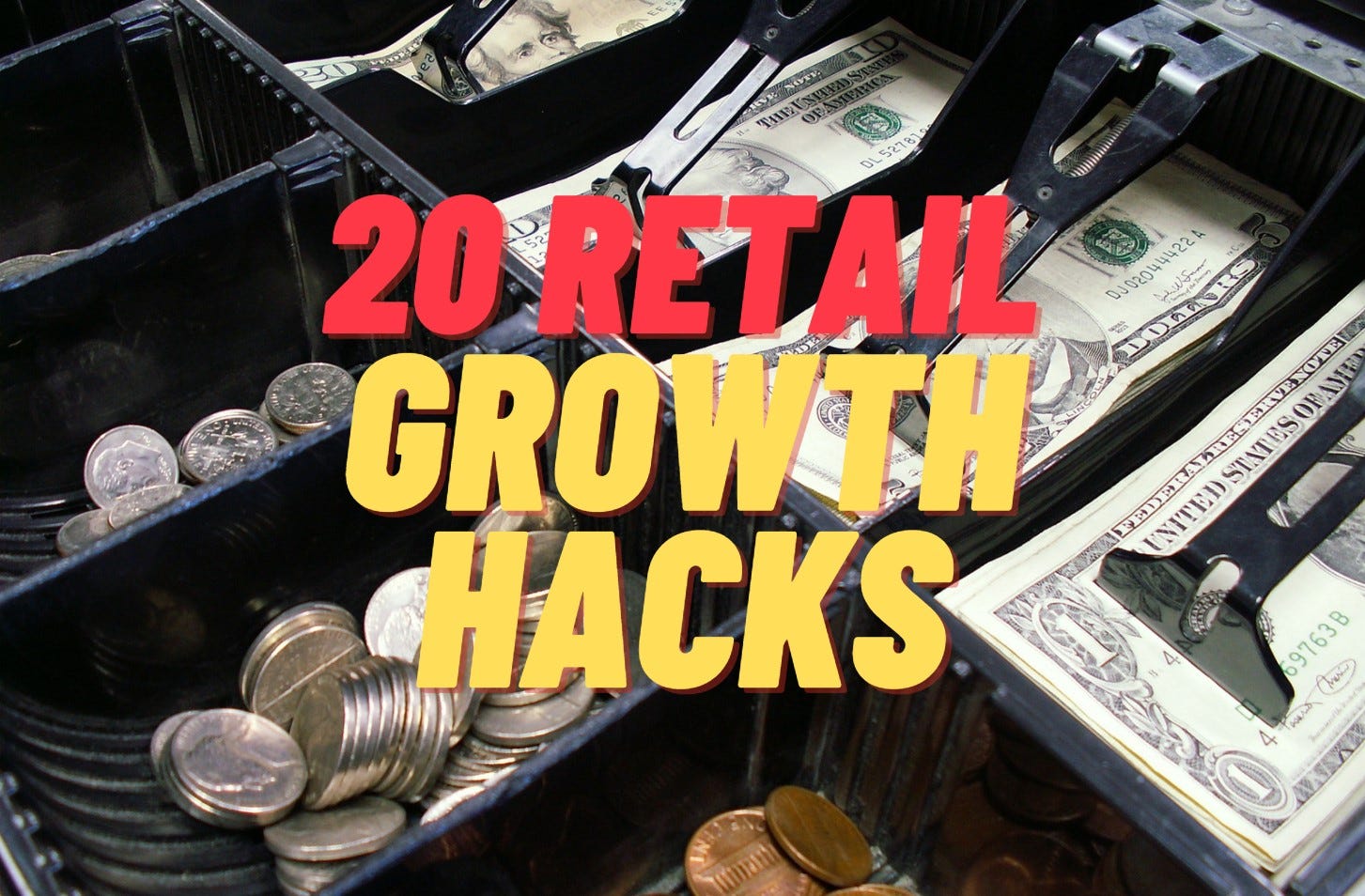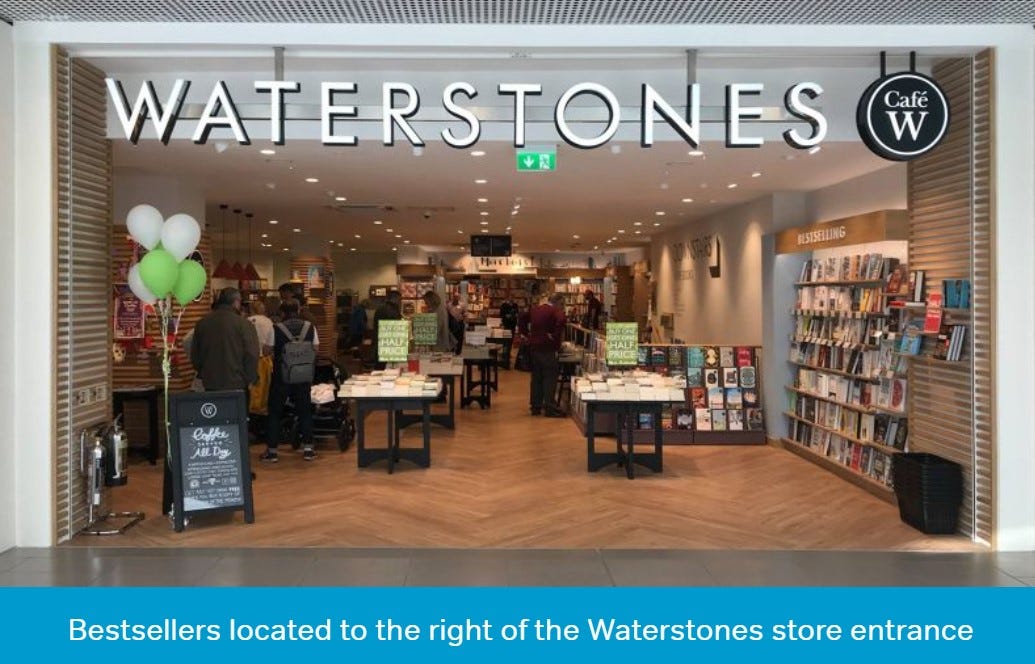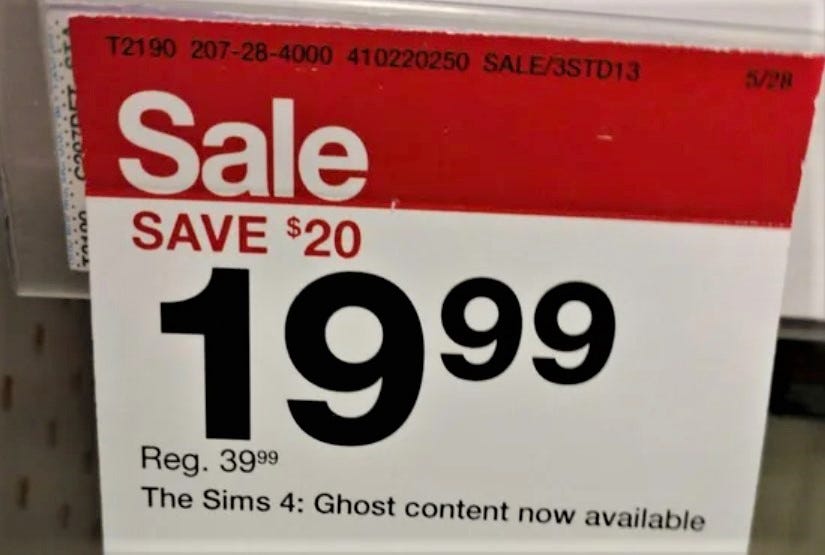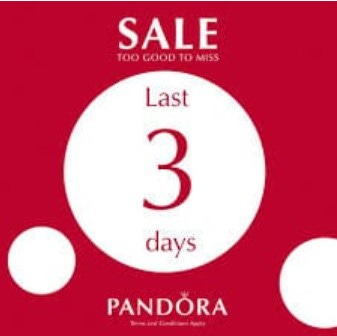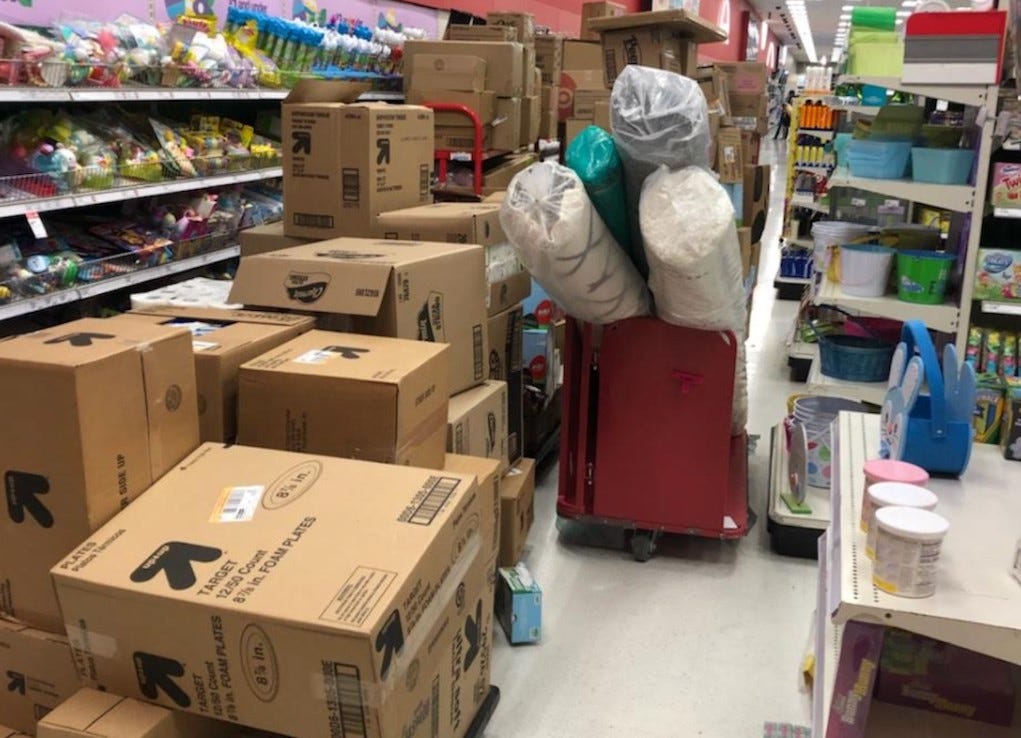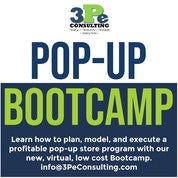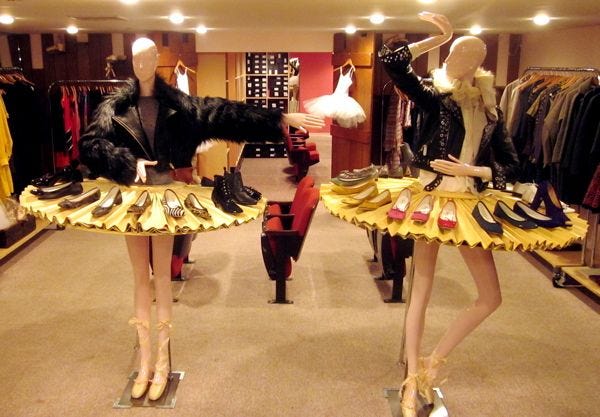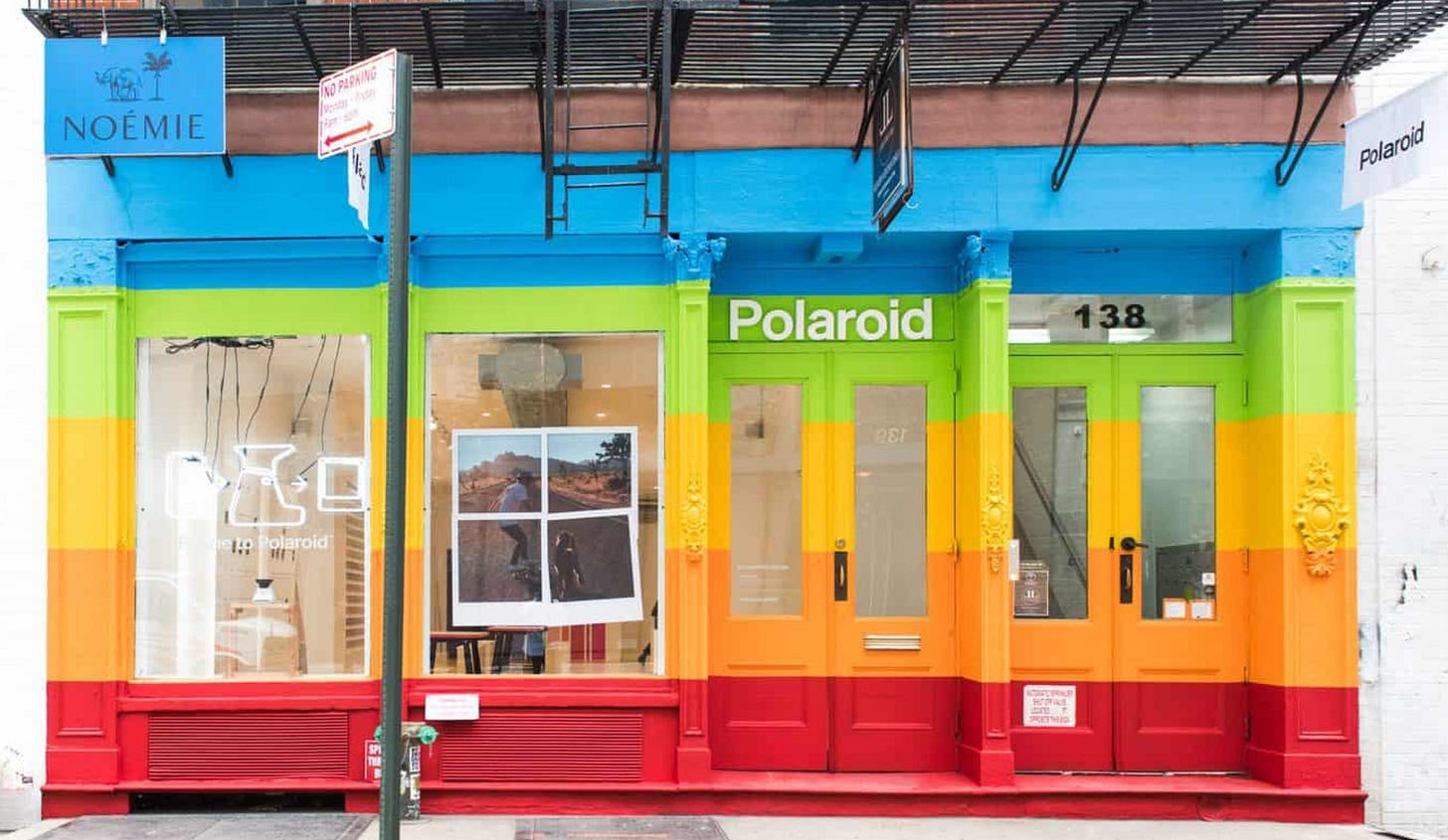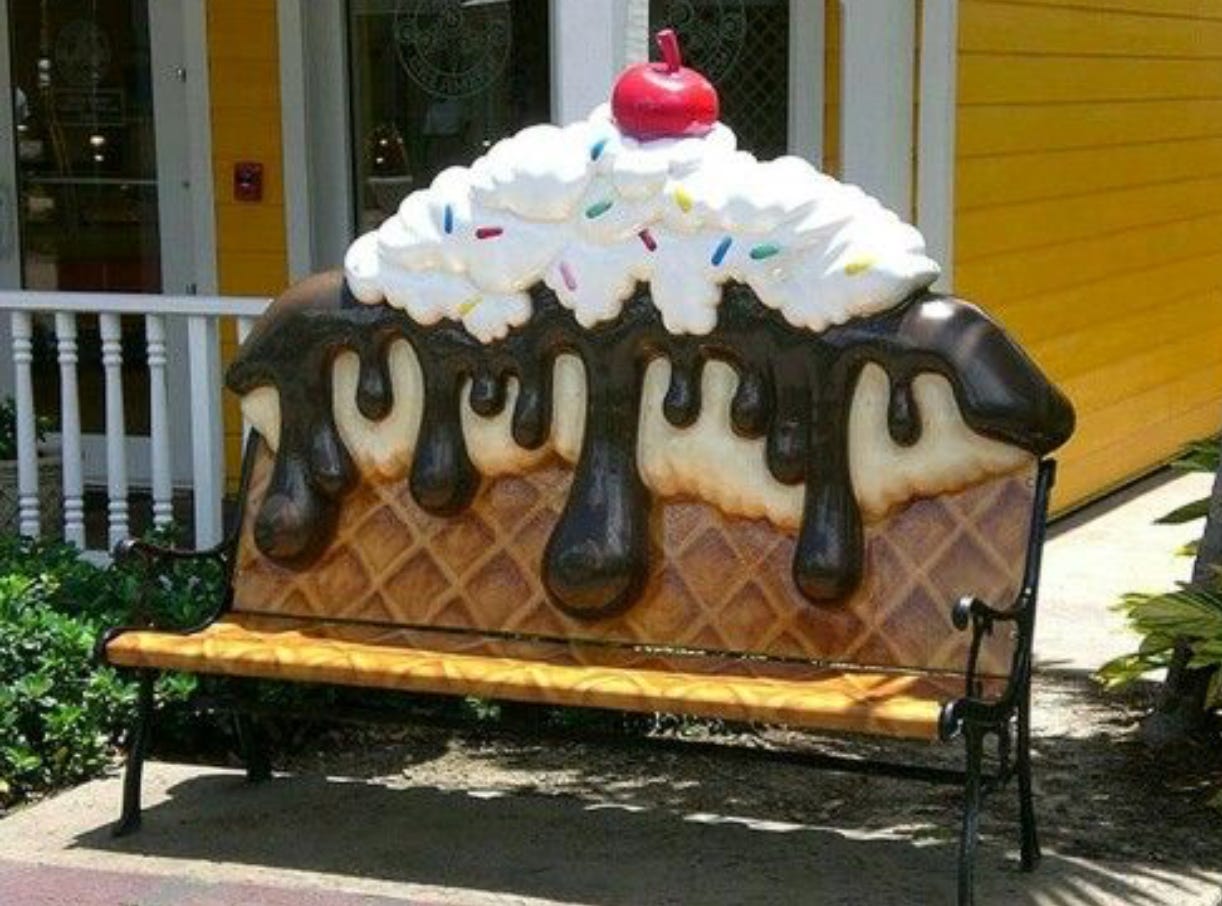20 Retail Hacks to Grow Sales Fast
These growth opportunities are based on real-life observations made in retail stores, large and small, over the past several weeks.
I am thinking a ton about the upcoming holiday season. Are you? Challenges abound, but we all must stay focused on what we can control and drill deep into those opportunities. This issue is all about doing just that. Hope you enjoy!
If you do, please do me a huge favor share All Things Retail with your co-workers and friends:
If you have not subscribed yet, you can here:
20 Retail Hacks to Grow Sales Fast
I learned a long time ago you cannot lead a business from behind a desk. Regardless of the industry, it’s critical to get out of the office, meet employees and customers, observe the operation, and visit competitors. Watch everything, ask questions of everyone, listen (then listen some more), take lots of notes, and work hard to put yourself in your customers shoes to “see what they see” and “experience what they experience”.
If you are a small-business owner, and your “office” is your store or stores, the same theory applies. I have met many owner-operators that believe if they spend too much time away from their shop(s), things will fall apart. While everything is a matter of degree, I would suggest if you don’t spend time away, seeing the reality of the retail world, you will be at a competitive disadvantage.
I do these tours on a year-round basis. I may spend a full day with a planned agenda, or simply pop into a shop before or after going out to dinner. Exploration is constant.
As retailers begin to prepare for the holiday season, I spend more time in the field than normal. I see as many merchants as possible, to better understand trends, tactics, new products, new ideas (including those I might “borrow” for my business or clients), competitive opportunities, and whatever else may jump out at me. This time of year is ideal to see what Holiday 2021 will look like.
This year there is plenty to see, with increased shopper traffic, inventory shortages and staffing challenges leading the list across almost all retailers. But it’s important to look beyond the obvious and try to see specific opportunities, risks, and more. I have been scribbling lots of notes and taking tons of pictures. In fact, some of these observations have already been flipped into tactics for some of my clients to use.
This year’s opportunity list became so robust so quickly that I thought it would make sense to share some of my findings here. These are hacks that should have a fast and meaningful impact on your business. All are based on real-life observations. Most are self-explanatory, so I’ll keep each one brief. I’m always available to chat if you want to dig deeper into any of these ideas.
Here we go!
Managers Need to Manage: Don’t let them get caught up running a register, pulling stock from the back room, or doing other tasks. This occurs every year and will be a bigger challenge given staffing shortages. There will certainly be exceptions but work hard to keep managers free to lead their store teams, engage with guests, and react to issues and opportunities.
Make Stores Self- Service: I know, I am a huge proponent of good customer service. Don’t lower your standards there but think of service as the “icing on the cake”. Be sure, especially given staffing challenges, that your store can be shopped efficiently without any guest interaction. Do you have proper way-finding graphics? Promotional signs? Cross-selling via displaying complementary products together? Identification of check-out location?
Leverage Store Entryway: Give each shopper 6’ – 8’ to enter your store(s) and adjust to the surroundings, but then hit them up with compelling displays of new product, promotional product, or other offerings you want to feature. This space is extremely powerful and is often underutilized.
Guests Turn Right: Most people entering your store will instinctively turn to the right. So, use the right side of your storefront (and the center) for meaningful displays of product. Checkout counters should never be on the right, keep them on the left or at the rear of the store.
Self-Checkouts: While self-checkouts certainly save on labor, they can create challenges from a service perspective. They take space, typically from manned checkouts. This may result in long lines if most of your guests want to use manned checkouts and fewer are available. The risk is higher if your products are more difficult for those using self-checkout (large sized items, items needing to be weighed, etc.). Costco had 20-minute lines yesterday with empty self-checkout stations (people had too many items in their carts to want to do it themselves and the design of the self-checkout stations don’t support large orders). If you offer self-checkout, don’t ignore the manned versions.
Open Early & Close Late: Beat out your competition. Grab those early arriving shoppers and then do the same when other stores kick them out at the end of the day (it drives me nuts when stores don’t let customers in 5 minutes before closing time or start flickering their lights signaling it’s time to go).
Pricing Nuances: There is a ton of research that has been done on how consumers react to different types of pricing. Three clear opportunities are eliminating the dollar sign ($) from signs, shelf labels, and price tags; having all pricing end in a “9” (ex: 14.99 vs. 15.00, seemingly common knowledge but not always in practice); and bracketing, where you offer 3 similar items with the understanding most shoppers will skew towards the middle price point. Bracket the item you really want to sell.
Sale Signs: Be sure sale signs are a different color (and possibly font) than your day-to-day signage and show the savings on each sign. This can be done via using “was, now” messaging (be sure the “now” is larger than the “was”) or showing a “Save $XX” (savings $$ are more impactful than savings percentages unless that percentage is 50% or more).
Private Shopping Events: plan and offer private events, perhaps with snacks and special discounts, for local organizations and businesses. It’s a great way to boost sales and gain new customers. Attendees love it because everyone wants to be a VIP, if even for a day (or a couple of hours).
Family Shopping Event: This has the same benefits as the private events noted above, with a bonus. That bonus is you are engaging the families of your team members, creating higher levels of engagement, loyalty, and reciprocity. Ideally, this will drive not only incremental sales but a greater sense of “team” within your staff.
Break Through the Clutter: It’s never easy to get noticed in the “sea of retail” stores that exist. Be bold and do something(s) to deviate from the norm and break through the clutter. Paint a wall or your storefront (if allowed) a bright, non-traditional color; record a wacky promotional video (Google Dollar Shave Club launch); or show a (fake) cracked storefront window, like Apple did below.
The Holidays Begin Earlier: If Pumpkin Spice everything can launch in August (it used to be September but gets earlier every year), Christmas should follow suit. I’d suggest your holiday displays, signage, decorations, and music go live in mid-October. I know some will complain about the timing, but the silent majority will begin thinking about and perhaps purchasing for the holiday’s weeks earlier than normal.
Social Media: While you certainly want your posts to be creative and engaging, don’t forget to include a Call to Action every time. The CTA could be a link to your website, a coupon, a discount code, a sign-up form for promotional mailings, etc.
Social Proof: We all look at customer reviews when purchasing from Amazon and others. If the reviews are good, we often convert into a buyer. If they are poor, we move on. Think about how you can create social proof within the 4-walls of your store. Perhaps record customer testimonials to use on social media, your website, and maybe in-store monitors? How about taking written testimonials and putting them into a nicely designed poster to use as signage within your store(s)?
Fear of Missing Out: FOMO is a very strong motivator. One simple way too use FOMO is during sale events. When you get to the final 3-4 days of an event, begin a “countdown”, both online and in-store (via signage and verbal interactions), to the end of the sales. “Don’t miss out! Sale ends in 3 days!” can be a powerful message.
Internal Influencer: Not all businesses can afford to engage with social media influencers. If this is the case, create your own influencer. Which of your team members is outgoing, speaks well, and could become the face of your business? Find someone (maybe you?) and begin doing short videos. A few of my clients use this inexpensive recording setup. Post them 2-3 times a week on TikTok, Facebook, and Instagram. Get other team members, friends, and family to follow and share your posts and hashtag.
Sale Flyer: Shoppers can be engaged by simple, easy to read collateral materials as they enter your store. Create a one-page sale flyer showcasing 6-12 items and distribute it when people enter your store(s). Guests can pick one up from a holder, or an associate can hand them one. Most people will take one and look (and perhaps buy). These flyers can also be distributed outside of your store to drive addional traffic. They are an effective, low-cost marketing tool.
Stocking Shelves: While keeping inventory on shelf and available for sale is vital, don’t let the effort to do so impede sales. I have been in many stores that loaded aisles with inventory to be stocked with one associate doing the work. Given the number of boxes, I estimated it was 3-4 hours’ worth of work. Aisles were impassable in some cases while 8’-12’ of fixtures (and therefore product for sale) were blocked in other cases. Limit how much freight goes onto the salesfloor, keep aisles clear, ensure your team members allow guests easy passage by them (and greet them of course).
Clearance: Don’t let clearance goods clutter your aisles. Pull it out of each section, group it together and sign it appropriately. It will sell better and will allow you to keep each section of your store filled with frontline merchandise and looking pristine.
Thank You: Say thank you to every guest that leaves your store. Say thank you to every team member at the end of their shift.
My store tours will continue on and I’ll share new findings over time. Thank you!
Retail News & Happenings:
ThreadUp Resale Report
Petco CEO on Outlook: Our e-Commerce Revenue Continues to ‘Scale Rapidly’
Survey: Retailers Boost Spending on Returns Management
How to Keep Employees from Quitting
How To Write A Brand Essence Statement
Is Your Organization Surviving Change — or Thriving in It?
Sponsored Content
Interested in Learning How to Use Pop-Up Shops to Grow Your Business?
At 3pe Consulting, we are experts in the Pop-Up business. Having planned and opened over 1,200 Pop-Up locations, our real-life expertise is unequaled. In fact, we led the creation and growth of the Toys “R” Us Pop-Up Store program, which grew from 0 to over 600 stores and $200 million in sales within 18 months!
Our Virtual Pop-Up Store Bootcamp covers the basics of the pop-up model, real estate selection, and best practices in an interactive, 90-minute Zoom group meeting. This initial session is followed up by 2 one-on-one 30 minute calls to review the specific needs, questions, status, and concerns of each attendee. The cost is a fraction of what our in-person Bootcamp charges.
We have several dates and times still available. Click below to learn more!
Learn More About Our Pop-Up Bootcamp
3Pe Consulting’s Bootcamp is sponsored by Popable™, the Pop-up Marketplace where brands and spaces come together to do more pop-ups. Your next pop-up shop is just a click away! Click here to learn more about Popable.
Cool Pics:
Quote of the Week:
“No man has ever listened himself out of a job.”
– Calvin Coolidge, 30th President of the United States




